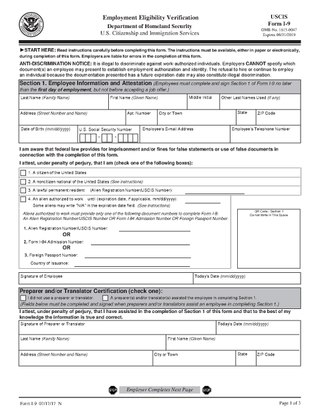Related Research Articles

Foreign workers or guest workers are people who work in a country other than one of which they are a citizen. Some foreign workers use a guest worker program in a country with more preferred job prospects than in their home country. Guest workers are often either sent or invited to work outside their home country or have acquired a job before leaving their home country, whereas migrant workers often leave their home country without a specific job in prospect.
An open shop is a place of employment at which one is not required to join or financially support a union as a condition of hiring or continued employment.
This article gives detailed information on the employment situation in Hong Kong.
An L-1 visa is a visa document used to enter the United States for the purpose of work in L-1 status. It is a non-immigrant visa, and is valid for a relatively short amount of time, from three months to five years, based on a reciprocity schedule. With extensions, the maximum stay is seven years.
TN status is a special non-immigrant classification of foreign nationals in the United States, which offers expedited work authorization to a citizen of Canada or a national of Mexico. It was created as a result of provisions of the North American Free Trade Agreement that mandated simplified entry and employment permission for certain professionals from each of the three NAFTA member states in the other member states. The provisions of NAFTA relevant to TN status were then carried over almost verbatim to the United States–Mexico–Canada Agreement that replaced NAFTA in 2020.
Permanent Labor Certification is a process step required by some categories of employment-based immigration to the United States of America. Its stated goal is to "protect U.S. workers and the U.S. labor market by ensuring that foreign workers seeking immigrant visa classifications are not displacing equally qualified U.S. workers". U.S. workers are U.S. citizens, nationals or U.S. lawful permanent residents.

Form I-9, officially the Employment Eligibility Verification, is a United States Citizenship and Immigration Services form. Mandated by the Immigration Reform and Control Act of 1986, it is used to verify the identity and legal authorization to work of all paid employees in the United States. All U.S. employers must ensure proper completion of Form I-9 for each individual they hire for employment in the United States.

A travel document is an identity document issued by a government or international entity pursuant to international agreements to enable individuals to clear border control measures. Travel documents usually assure other governments that the bearer may return to the issuing country, and are often issued in booklet form to allow other governments to place visas as well as entry and exit stamps into them.
A European Economic Area Family Permit was an immigration document that assisted the holder to enter the United Kingdom as a family member of a citizen of a contracting state to the European Economic Area agreement or a Swiss citizen. They were issued by the UK immigration authorities under the Immigration Regulations 2006 (UK).
Card check, also called majority sign-up, is a method for employees to organize into a labor union in which a majority of employees in a bargaining unit sign authorization forms, or "cards", stating they wish to be represented by the union. Since the National Labor Relations Act (NLRA) became law in 1935, card check has been an alternative to the National Labor Relations Board's (NLRB) election process. Card check and election are both overseen by the National Labor Relations Board. The difference is that with card sign-up, employees sign authorization cards stating they want a union, the cards are submitted to the NLRB and if more than 50% of the employees submitted cards, the NLRB requires the employer to recognize the union. The NLRA election process is an additional step with the NLRB conducting a secret ballot election after authorization cards are submitted. In both cases the employer never sees the authorization cards or any information that would disclose how individual employees voted.
The Security Through Regularized Immigration and a Vibrant Economy Act of 2007 or STRIVE Act of 2007 is proposed United States legislation designed to address the problem of illegal immigration, introduced into the United States House of Representatives. Its supporters claim it would toughen border security, increase enforcement of and criminal penalties for illegal immigration, and establish an employment verification system to identify illegal aliens working in the United States. It would also establish new programs for both illegal aliens and new immigrant workers to achieve legal citizenship. Critics allege that the bill would turn law enforcement agencies into social welfare agencies as it would not allow CBP to detain illegal immigrants that are eligible for Z-visas and would grant amnesty to millions of illegal aliens with very few restrictions.

A Norwegian passport is the passport issued to nationals of Norway for the purpose of international travel. Beside serving as proof of Norwegian citizenship, they facilitate the process of securing assistance from Norwegian consular officials abroad.

E-Verify is a United States Department of Homeland Security (DHS) website that allows businesses to determine the eligibility of their employees, both U.S. and foreign citizens, to work in the United States. The site was originally established in 1996 as the Basic Pilot Program to prevent companies from hiring people who had violated immigration laws and entered the United States illegally. In August 2007, the DHS started requiring all federal contractors and vendors to use E-Verify. The Internet-based program is free and maintained by the United States government. While federal law does not mandate use of E-Verify for non-federal employees, some states have mandated use of E-Verify or similar programs, while others have discouraged the program.
A work permit or work visa is the permission to take a job within a foreign country. The foreign country where someone seeks to obtain a work permit for is also known as the "country of work", as opposed to the "country of origin" where someone holds citizenship or nationality.

A B visa is one of a category of non-immigrant visas issued by the United States government to foreign nationals seeking entry for a temporary period. The two types of B visa are the B-1 visa, issued to those seeking entry for business purposes, and the B-2 visa, issued to those seeking entry for tourism or other non-business purposes. In practice, the two visa categories are usually combined and issued as a "B-1/B-2 visa" valid for a temporary visit for either business or pleasure, or a combination of the two. Nationals of certain countries do not usually need to obtain a visa for these purposes.
The UK Work Permit scheme was an immigration category used to encourage skilled workers to enter the United Kingdom (UK) until November 2008, when it was replaced by the points-based immigration system. It provided an opportunity for overseas citizens seeking to gain valuable international work experience in the UK and was often used to enable UK employers to transfer key personnel to the UK from outside the European Economic Area (EEA) region.

The kafala system is a system that exists in many of the Arab countries in the Middle East, including most of the countries of the Arabian Peninsula, which involves binding migrant workers to a specific employer throughout the period of their residence in a country. Essentially the same system existed in Israel under the label "binding labour," until that country's Supreme Court eliminated it in 2006. The kafala system is noted by human-rights and labor-rights organizations for facilitating the exploitation of migrant workers, who are unable to quit their jobs for their term of contract and dependent on their employer for their visa and legal status in the country.

The Border Security, Economic Opportunity, and Immigration Modernization Act of 2013 was a proposed immigration reform bill introduced by Sen. Charles Schumer (D-NY) in the United States Senate. The bill was co-sponsored by the other seven members of the "Gang of Eight", a bipartisan group of U.S. Senators who wrote and negotiated the bill. It was introduced in the Senate on April 16, 2013, during the 113th United States Congress.
The American Competitiveness and Workforce Improvement Act (ACWIA) was an act passed by the government of the United States on October 21, 1998, pertaining to high-skilled immigration to the United States, particularly immigration through the H-1B visa, and helping improving the capabilities of the domestic workforce in the United States to reduce the need for foreign labor.
Migrant workers in the United Arab Emirates describe the foreign workers who have moved to the United Arab Emirates (UAE) for work. As a result of the proximity of the UAE to South Asia and a better economy and job opportunities, most of the migrant foreign workers are from India, Nepal, Sri Lanka, Bangladesh, Philippines and Pakistan.
References
- "ACLU Still Critical of State's Work Card Proposal." Gambling Magazine. September 10, 2002.
- "County Rethinks Work Card Requirements." Gambling Magazine. April 3, 2001.
- "Employees Need a Work Card Permit." Westmoreland Gazette. January 19, 2007.
- Lahane, Herbert J. "The Union Work Permit." Political Science Quarterly. 66:3 (September 1951).
- Workers Performing Specialized Construction Work. Jobs Protection Office, Ontario Ministry of Labour. August 2006. ISBN 1-4249-1931-2